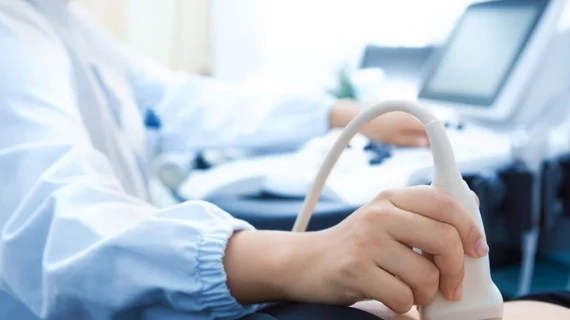Self-ultrasound for early career radiologists seeking training during the pandemic
For early career radiologists desperately seeking training during the pandemic, conducting self-ultrasound tests may be a sound alternative.
Experts with KK Women's and Children's Hospital, in Singapore, recently detailed their experience with such examinations Wednesday in Academic Radiology. With the pandemic disrupting regular rad training and calls to limit human contact, teachers and trainees have been forced to get creative.
US rooms sat empty and available, so trainees began using themselves as guinea pigs in the effort. Each resident receives a list of body parts to be imaged, targeting the bowels, vessels, neck and musculoskeletal system, Professor Tang Phua Hwee and colleagues wrote July 15.
“The range of body structures assigned for self-ultrasound allows residents to be exposed to a variety of human anatomy and can highlight areas of deficiency residents may have, serving as a useful method of objective assessment of competency and identification of weakness as ultrasound simulators have been proposed to do,” she noted.
The team has also found that this method of training helps build empathy in trainees, who must hold their breath to obtain images that are free from artifacts and maintain a full bladder when examining the pelvis.
KK Women's and Children's Hospital tallied scores of residents who were exposed to self-ultrasound training and compared those up against the previous batch of students, prior to the experiment. Both groups also attended the radiology department’s ultrasound orientation and were assessed across three ultrasound domains. The team noted that those using self-imaging improved at the midway point of training compared to past residents, with no statistical difference between the two group’s scores.
Hwee et al. were encouraged by the early results and may explore further use of the training practice beyond the pandemic.
“However, there is limited exposure to significant pathology with self-ultrasound and it supplements rather than replaces the regular ultrasound training program,” the team concluded their research letter. “We plan to incorporate self-ultrasound into our teaching curriculum even after the restriction on human interaction has been lifted. Radiology departments providing ultrasound training may also wish to consider incorporating self-ultrasound into their training program.”

